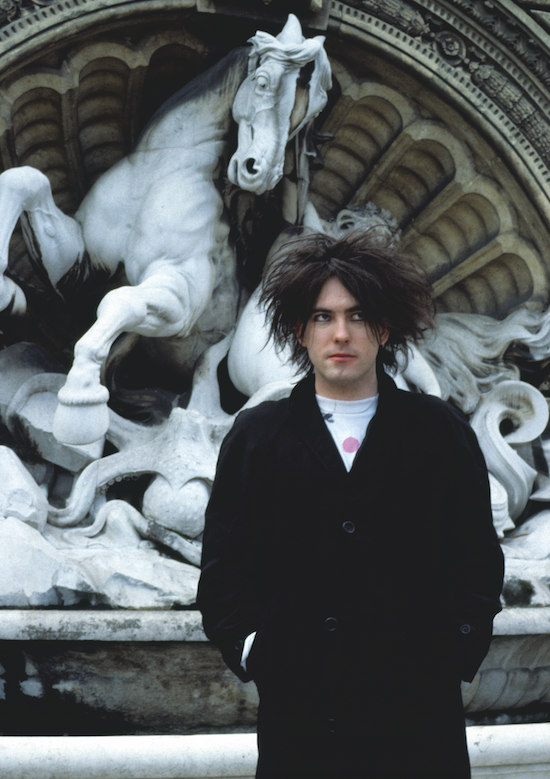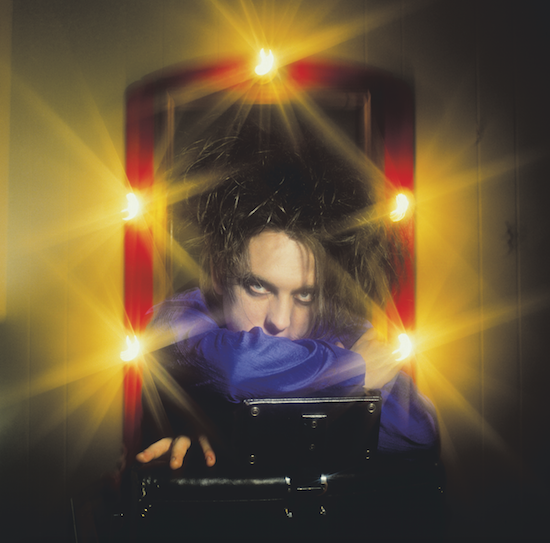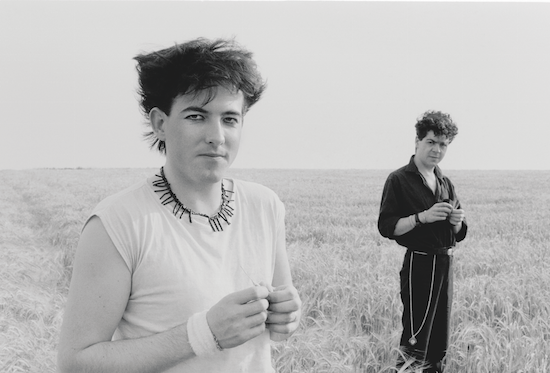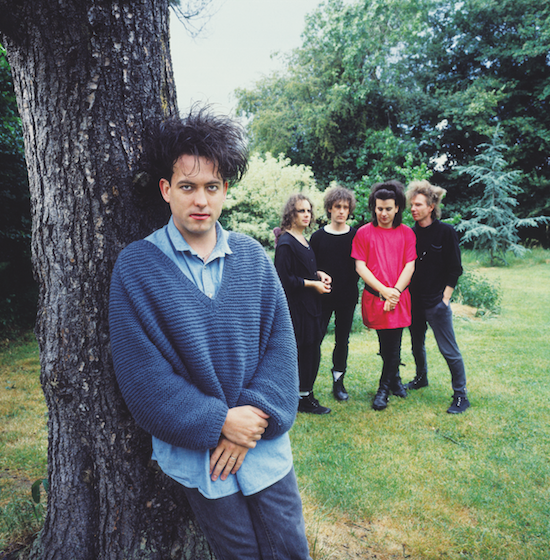As one of rock photography’s most enduring names over the last 40 years, Tom Sheehan’s talent to lure the most intimate shots from his chosen band is perhaps second to none. It’s a bond drawn from rapports formed over decades with his chosen subjects, none less strong than his decades long relationship with The Cure.
Over some 20 sessions across over thirty years Sheehan’s ties with the band has led to some of rock’s most lasting portraits, and his archive, over half of which has never before been seen, is newly compiled in his latest book In Between Days: The Cure in photographs 1982 – 2005.
A follow-up to his acclaimed Paul Weller retrospective, the new book is divided into three sections. The first documents the group’s formative years, including Robert Smith’s work with Siouxsie And The Banshees; the second through their acclaimed 1980s trilogy The Head On The Door, Kiss Me, Kiss Me, Kiss Me and Disintegration; and the third through the group’s 1990s ascendance to the realms of arena rock, with each complemented by an essay from Simon Goddard, while Robert Smith himself has written the foreword.
As well as exclusive Q&A with Sheehan which you can read below, tQ also has a copy of the new book to give away, which you can win by correctly answering the question below. Send your answer to comps@thequietus.com before midday this Friday (January 27). Read on after that for the interview with Tom Sheehan and some photographs from the book.
Which of the following albums did The Cure tour in 1984?
A: The Top
B: Pornography
C: The Head On The Door

How did you establish such a lasting relationship with The Cure?
Tom Sheehan: When we met it was just for a news story when they were supporting the Banshees, we went over to the Hilton in Shepherd’s Bush just to do a news story. We sat in the bar and had a swift drink and within about 15 minutes down came Siouxsie telling them to get on the bus. Hence those pictures were just a couple of snaps around the table and at the revolving door. After that I think the reason we were so close was just familiarity. Robert Smith was good at posing from day one, and then as his whole persona grew it was probably easier for him just to make sure the slap was on and the syrup was OK, and that he had a nice shirt on. If you look at a visual history of Robert, certainly over the first ten years you can see him grow into it.
Simon Goddard’s essays divide the book into sections, were there natural points to break it up?
TS: Simon Goddard’s an old friend, and if you’ve got that many images in one go you can get snow blind, so you do need some sort of divider. 99% of people who’ve bought the book, or the last one I did on Weller, are going to know the history of the band, so you don’t need a career-defining piece on them, the essays just need to put the pictures into context and break up the images.
Were there any shoots that were as memorable for the experience of shooting them as much as the end product?
TS: It sounds a bit wanky and weird but I do become a different person when I’ve got a camera, all I’m thinking about is light and shapes and what I see through the lens. When I’m photographing Robert I’m not thinking ‘wow, I love their new record’, it’s what’s happening at that point in time. The end result’s the most important thing, conversations happen while you’re doing it but you make sure they know how to respond and what to do. If they’re professionals you don’t want any shenanigans or fucking about because it’s serious shit, even if I do have a smile on my face.

So there’s a conscious division between Tom Sheehan the photographer and Tom Sheehan the person?
TS: I think after you’ve done your work in the session if you’re rocking out and relaxing afterwards I that’s not the time to take pictures, unless it’s that kind of band like The Libertines who want to act like that. Then if it is that type of band, professionals acting as junkies, it’s like ‘for fuck’s sake it’s the music that counts, not your shenanigans.’ Just write a tune, take the leather jacket off and stop drinking, know what I mean?
So did you ever indulge in the ‘rock & roll lifestyle’?
TS: I’m not saying I haven’t had my moments! I just didn’t shout about it, I never took pictures of it or wrote songs about it. Drink and drugs, just get on with it, it’s not the be all and end all, that should be your tunes or your writing or your photography. Pubs are open from dawn to dusk these days, you can get any amount of drugs you want, what’s the big deal? The most important thing is art, craft, skill. With bands where the thing that comes up first is ‘I’m a junkie’, they can fuck off back to Rada.
How many photos were unseen until this book?
TS: I’d probably say around two thirds of it has never seen the light of day. I met a lot of big Cure fans from all over the world at the book launch who said there was stuff they’d never seen I syndicated a modicum of work with strict embargos but a lot of it was under wraps until now. 98% of it was shot for Melody Maker, as well as some things just for Robert and a couple of bits for Uncut. There’d be a spread picture, a cover picture then a couple of snaps and they might use one down the line for a news feature, but there’s still lots more [that don’t get used]. I like seeing the one shot that was used then two or three others that weren’t because it gives context to that one picture, you can see how it grows.



